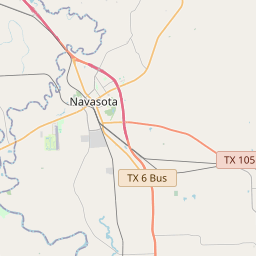Andrew Robinson Sr.
Historical marker location:






First settler of Stephen F. Austin's "Old 300" colonists to arrive in Texas. Came November 1821 with his wife Nancy and 2 children. In 1824 he received title to over 9,000 acres of land and was made a captain in the colonial militia. The town of Washington was surveyed on his grant and he became a co-founder of it. By 1830 he was operating a ferry at La Bahia Crossing as well as a hotel and saloon. In 1835 he fought in the Battle of Gonzales, where his unit first carried into battle the original Lone Star flag made by Sarah Dodson. He died 1852
As one of the most visible programs of the Texas Historical Commission (THC), historical markers commemorate diverse topics in Texas history, including: the history and architecture of houses, commercial and public buildings, religious congregations, and military sites; events that changed the course of local and state history; and individuals who have made lasting contributions to the state, community organizations, and businesses.
The Texas Rangers, a famous law enforcement agency, were first organized in 1835 to protect settlers from Native American attacks.
In its early years, Washington County was primarily an agricultural community, with cotton being the main crop. Many German immigrants settled in the area and brought with them their farming expertise and traditions. These settlers played a crucial role in shaping the county's agricultural landscape and introducing a strong cultural influence that is still evident today.
During the Civil War, Washington County saw its fair share of conflict and upheaval. The county was divided in its loyalties, with some residents supporting the Confederacy while others opposed secession. The region experienced military occupation and witnessed battles and skirmishes, leaving a lasting impact on its residents.
In the late 19th and early 20th centuries, Washington County transitioned from an agrarian economy to a more diversified one. With the arrival of the railroad, the county experienced a boost in commerce and industry. Businesses and services expanded, and the county's population grew as a result. Today, Washington County is known for its thriving agricultural industry, historical sites, and picturesque landscapes, attracting visitors from around the country.
Overall, Washington County, Texas has a storied past that reflects the broader history of the state. From its early origins as an agricultural community to its role in the Civil War and subsequent development, the county has played a significant part in shaping the growth and identity of Texas.
Washington County Timeline
This timeline provides a concise overview of the key events in the history of Washington County, Texas.
- 1834 - Washington County is organized as the first county in the Republic of Texas
- 1836 - The Battle of San Jacinto takes place, securing Texas independence
- 1838 - Washington-on-the-Brazos becomes the first capital of the Republic of Texas
- 1851 - Brenham is established as the county seat
- 1861 - Texas secedes from the Union and joins the Confederate States of America
- 1870 - The Houston and Texas Central Railroad reaches Brenham, boosting the local economy
- 1930s - The Great Depression impacts the agricultural industry in Washington County
- 1950 - Blue Bell Creameries is founded in Brenham
- 1972 - Washington-on-the-Brazos State Historic Site is established
- 1990s - Washington County experiences population growth and development